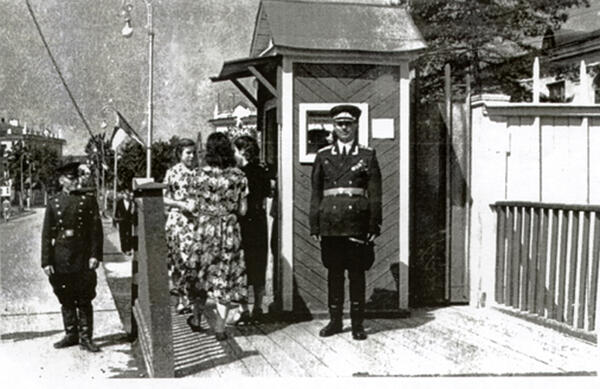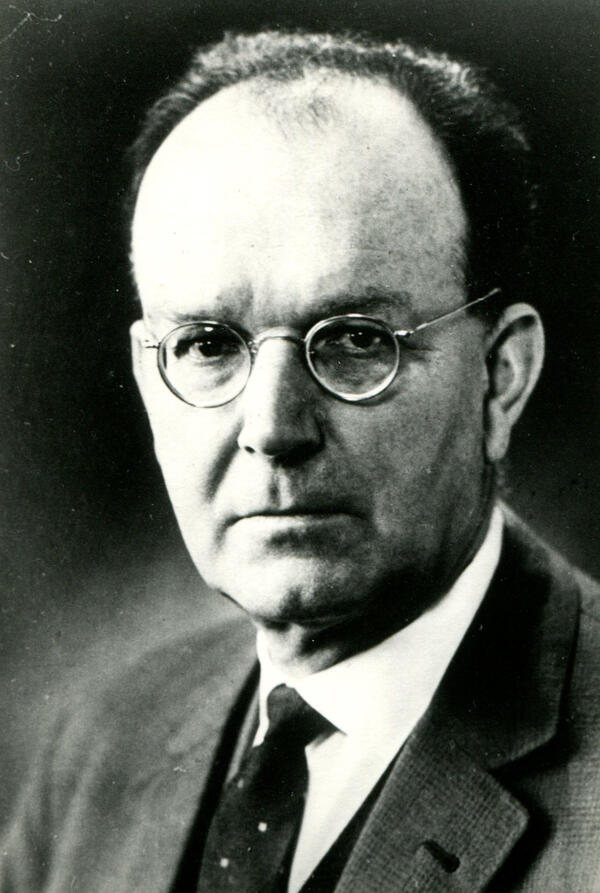After the Great Patriotic War, one of the main focuses of Soviet science was the use of nuclear energy potential. From the spring of 1945, all leading Soviet nuclear physicists visited Germany. Their task was to find materials of the German uranium project and the best German scientists. Academicians Alexander Leipunsky and Andrey Krasin selected foreign specialists at the University of Leipzig and the Kaiser Wilhelm Institute to work in the secret Laboratory B.
Each German scientist signed a contract, the terms of which differed from the contract with the Soviet specialists. A German scientist was paid up to 9,000 rubles a month — by comparison, a locksmith’s salary was 2,500 rubles. Unlike Soviet professors, the Germans were entitled to a normal working day and were provided with good living conditions.
Heinz Pose, professor at the universities in Halle and Leipzig and head of the uranium–heavy water nuclear reactor at the Kaiser Wilhelm Institute, was one of the first visiting scientists. Professor Pose was appointed scientific director of Laboratory B and supervised the search for new specialists, equipment and consumables. He personally recruited staff and contracted them. The document from the Museum of the History of Obninsk bears Heinz Pose’s signature.
The first group of 30 researchers, led by Professor Pose, arrived at the facility at the end of August 1946. They brought with them two trains of research equipment — tools, books and reference materials. Eight laboratories were set up at the facility. Professor Karl Friedrich Weiss, named in the contract, was in charge of the laboratory for the study of artificial and natural radioactivity. The German experts were joined by their families — more than 140 people. The children studied at the Obninsk school named after S. T. Shatsky, and some graduated from Soviet universities.
When work began on the world’s first nuclear power station, the details of which were classified, the German employees of Laboratory B were returned to their home country.
Each German scientist signed a contract, the terms of which differed from the contract with the Soviet specialists. A German scientist was paid up to 9,000 rubles a month — by comparison, a locksmith’s salary was 2,500 rubles. Unlike Soviet professors, the Germans were entitled to a normal working day and were provided with good living conditions.
Heinz Pose, professor at the universities in Halle and Leipzig and head of the uranium–heavy water nuclear reactor at the Kaiser Wilhelm Institute, was one of the first visiting scientists. Professor Pose was appointed scientific director of Laboratory B and supervised the search for new specialists, equipment and consumables. He personally recruited staff and contracted them. The document from the Museum of the History of Obninsk bears Heinz Pose’s signature.
The first group of 30 researchers, led by Professor Pose, arrived at the facility at the end of August 1946. They brought with them two trains of research equipment — tools, books and reference materials. Eight laboratories were set up at the facility. Professor Karl Friedrich Weiss, named in the contract, was in charge of the laboratory for the study of artificial and natural radioactivity. The German experts were joined by their families — more than 140 people. The children studied at the Obninsk school named after S. T. Shatsky, and some graduated from Soviet universities.
When work began on the world’s first nuclear power station, the details of which were classified, the German employees of Laboratory B were returned to their home country.





